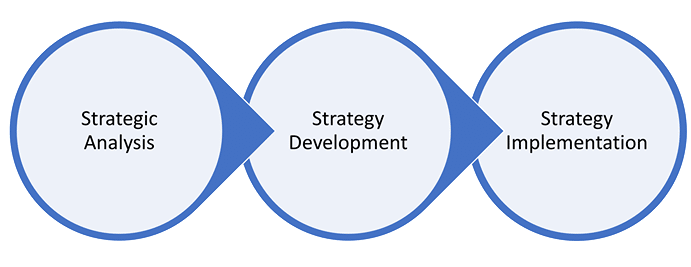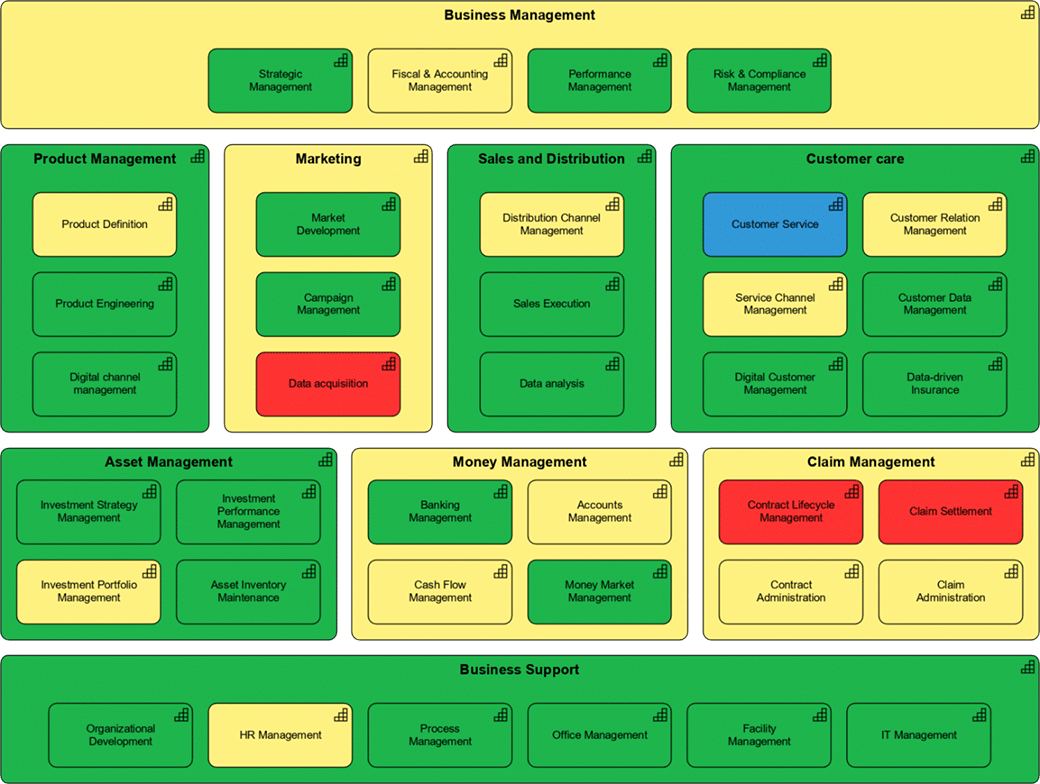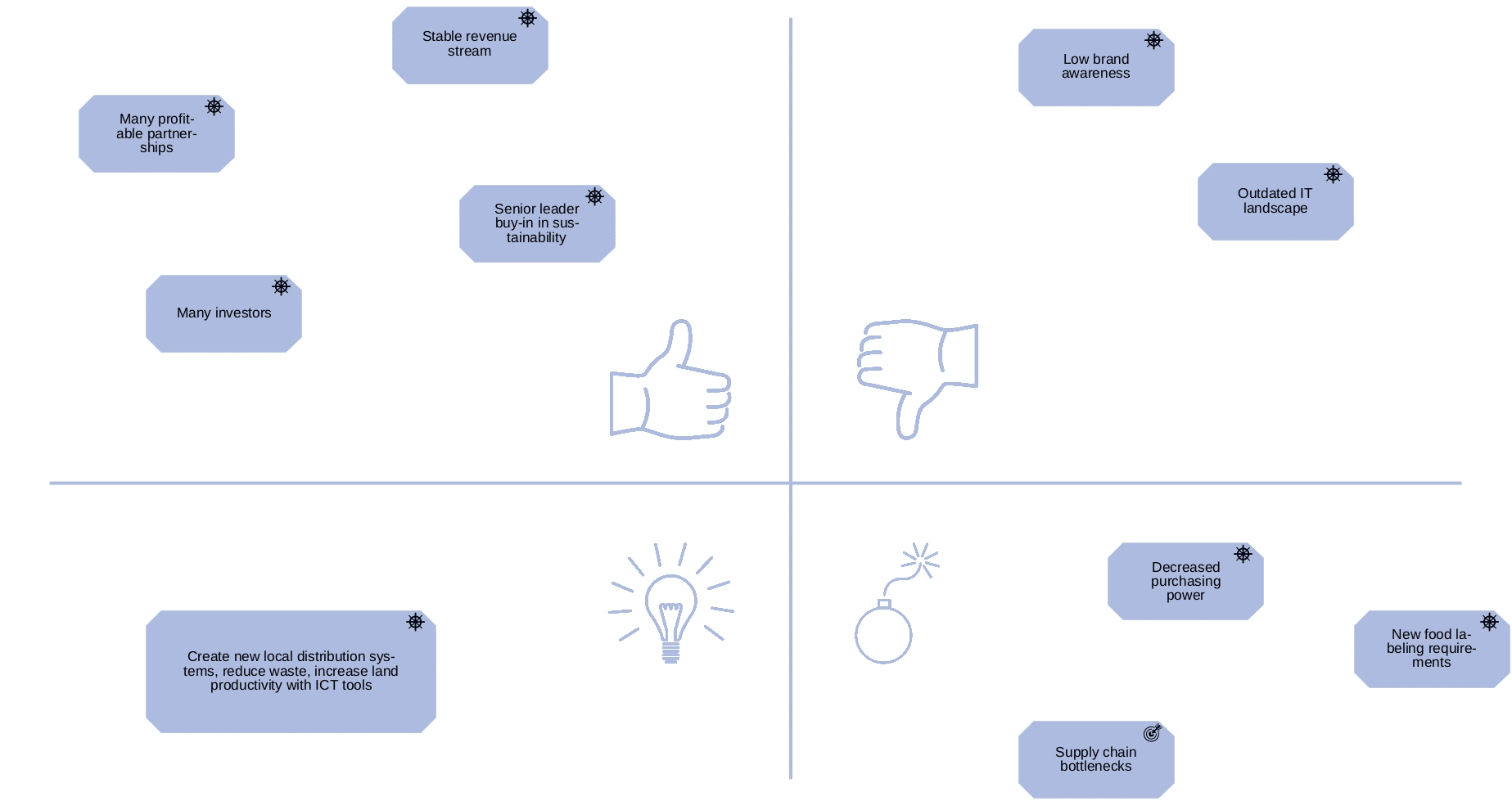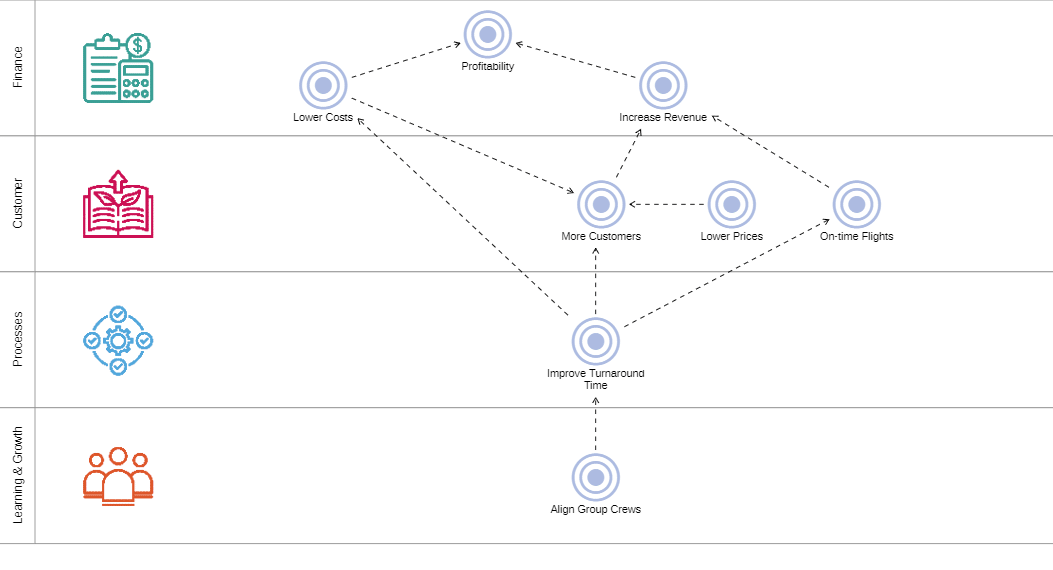Introduction
“Just like today” is something that hardly any entrepreneur or executive would say when asked “What should our company look like in 2 to 5 years?”. We all know that companies must constantly adapt to the modern reality. Topics such as digitalization, sustainability, growth, cost transformation and alike are on the future agenda of every successful company. And this requires a plan.

Mike Tyson
Shortly before one of his fights, the American boxer was asked how he would approach it, given the fact that his opponent was a brilliant technician and strategist. He replied: “Everyone has a plan until they get punched in the mouth”. Sometimes, a plan doesn’t survive beyond the first strike. Nevertheless, Tyson was also always well prepared and had his own plan for each fight. Why? Because you need a blueprint which you can adapt on the go, so that you don’t have to start from scratch each time something doesn’t go as planned. This applies to Strategic Management as well.
In this blog post, you’ll learn useful methods and tools for developing sustainable business strategies and how you can use Strategic Management to set your business up for long-term success.
Why Strategic Management?
Strategic Management serves to secure the continued existence and future success of a company. It involves answering questions like these:
- What are our long-term goals?
- How can internal and external influences on the company be systematically identified and evaluated?
- In which business areas do we want to operate?
- What long-term measures do we intend to take to compete in our business segments?
- What are our core capabilities that allow us to compete?
- What do we need to do to implement our long-term measures?
The three phases of Strategic Management
Roughly speaking, Strategic Management can be divided into three phases.

The three phases of Strategic Management
Each of these phases can be supported by Enterprise Architecture tools and services. Let’s take a closer look at them and the associated EA services.
Strategic Analysis – Know where we stand
Company and environmental analyses are a good starting point. Why?
Company analysis helps to identify and evaluate one’s own strengths and weaknesses. Being real about your current position is already half the job. It is an essential part of the process, as it forms the guidelines for the subsequent planning.
Probably the best-known technique for doing so is the SWOT analysis. In this sense, the company’s reviews are categorized as follows:
- Strengths
- Weaknesses
- Opportunities
- Threats
Such a SWOT analysis can be easily developed in workshops with your teams.
Example of a SWOT analysis in ArchiMate notation, created in the EA suite ADOIT
The environmental analysis, on the other hand, refers to all external circumstances and developments on which the company has no or only indirect influence. These factors, however, can have a great impact on your own strategic goals. This method helps analyse an organization’s environment for trends and factors that have a lasting impact on your organization’s core business. PESTLE stands for:
- Political: Political factors such as legislation, tariffs and political stability
- Economic: Economic factors such as economic growth, inflation and unemployment
- Socio-economic: Socio-cultural factors such as population structure, education and demographics
- Technological: Technological factors such as technological innovations, technology life cycles and development of public spending on research and development
- Legal: Legal factors such as existing and future laws, data protection regulations and certifications
- Environmental: Ecological factors such as locations, environmental regulations and the availability of natural raw materials
Example of a PESTLEweb in ArchiMate notation, created in the EA suite ADOIT
In contrast to the PESTLE analysis, also influencing factors between the identified factors are mapped in a PESTLEweb – similar to a cause-effect diagram.
In the course of this analysis, the individual factors are not considered in isolation, but in relation to one another. Opportunities and risks that have been identified can be compared with the company’s strengths and weaknesses as part of a SWOT analysis. In the end, the analysis must result in clearly defined goals, that we will cover in the next phase.
Strategy development – Where do we go now?
Based on the findings of the first phase, you will be defining your goals. Here, cause-effect diagrams can be a helpful tool to visualize the relationships between the goals. A categorization into perspectives such as finances, customers, processes, and learning and development can also be useful.
Sample strategy map of an airline in the EA suite ADOIT modelled with ArchiMate
Before identifying the strategic fields of action, you need to ask yourself the following question: What are the building blocks of my organization? Only then can you know how to adapt or rebuild them, if needed. In order to be able to do so, it is important to clarify on which building blocks the value creation of your company is based and which ones need to be adapted (or rebuilt) as a part of the strategy implementation?
Capability-based Planning is a technique suitable for this purpose. It helps you to analyse which new, adapted or reduced capabilities the organization needs in the future.
The technique is plain and simple, and therefore widely used. The output of such a planning is the so-called Business Capability Map. The map captures 50-100 of the most important skills (abilities) of an organization, which are then being assessed. This is usually done by evaluating their “strategic importance” and “maturity”. Finally, the action requirements from the “Strategic Analysis” phase are assigned to the capabilities.

Example of a capability map in the EA suite ADOIT
Heatmaps, like the one in the example above, give you a good overview of the current state of affairs. The capabilities with a high need for action can be assigned a higher priority.
Note: Sometimes high-level process maps are used instead of capabilities.
If you would like to learn how to create a Capability Map and use your Capability Portfolio as a strategic planning tool, we recommend our Capability Portfolio Management free e-learning course.
Strategy implementation – Strategy as a bundle of roadmaps
Strategy Roadmaps are created for individual or bundled capabilities with an identified need for action. They are used to plan and communicate the necessary implementation steps and for creating a unified understanding of the necessary transformation steps. Roadmaps are a central source of information outlining priorities and progress over time. They typically consist of a series of strategic requirements that must be implemented.
Roadmaps, on the other hand, also require teamwork. They allow teams and members involved to raise concerns, express opinions and exchange ideas on how to effectively implement the respective goals.
Example of a roadmap in the EA suite ADOIT
In our example, strategic requirements are mapped in the form of ArchiMate requirements. The roadmap is represented as a Kanban board.
Roughly put, the basis for each roadmap is a comparison between the actual and the target state. In cases of high complexity, it makes sense to map the actual and target states and compare them directly. However, this is not always necessary and should not prevent you from your roadmap creation.
Tips and tricks for Strategic Management
- Define the strategy together with your employees in a collaborative process. Techniques such as OKR (Objectives-Key-Results) can help you drive higher engagement.
- Identify and address potential conflicts of interests as early as possible.
- Make sure your strategic management processes are guided by coaches, such as members of your EA team.
- Ensure that the implementation results are objectively evaluated and conclusions drawn on a regular basis. A typical review cycle would be once per quarter.
Get our Strategic Management tips and tricks for takeaway.
Summary
Successful companies adapt to changes through their enterprise architecture. They act sustainably and focus on their customers. This is ensured by analysing and identifying strategic goals. Formulating these goals and planning their practical implementation is the task of strategy development and is thus one of top management’s central tasks.Enterprise Architecture Management methods help to moderate, formulate and implement these goals. If the necessary tasks are divided into individual services, strategy development and implementation become manageable.Services such as roadmapping and capability analysis enable co-creation and your teams are encouraged to participate. Strategies do not gather dust in management, but are a lighthouse for all parties involved.
Browse related content
Get our weekly updates.
Never miss the freshest content.













